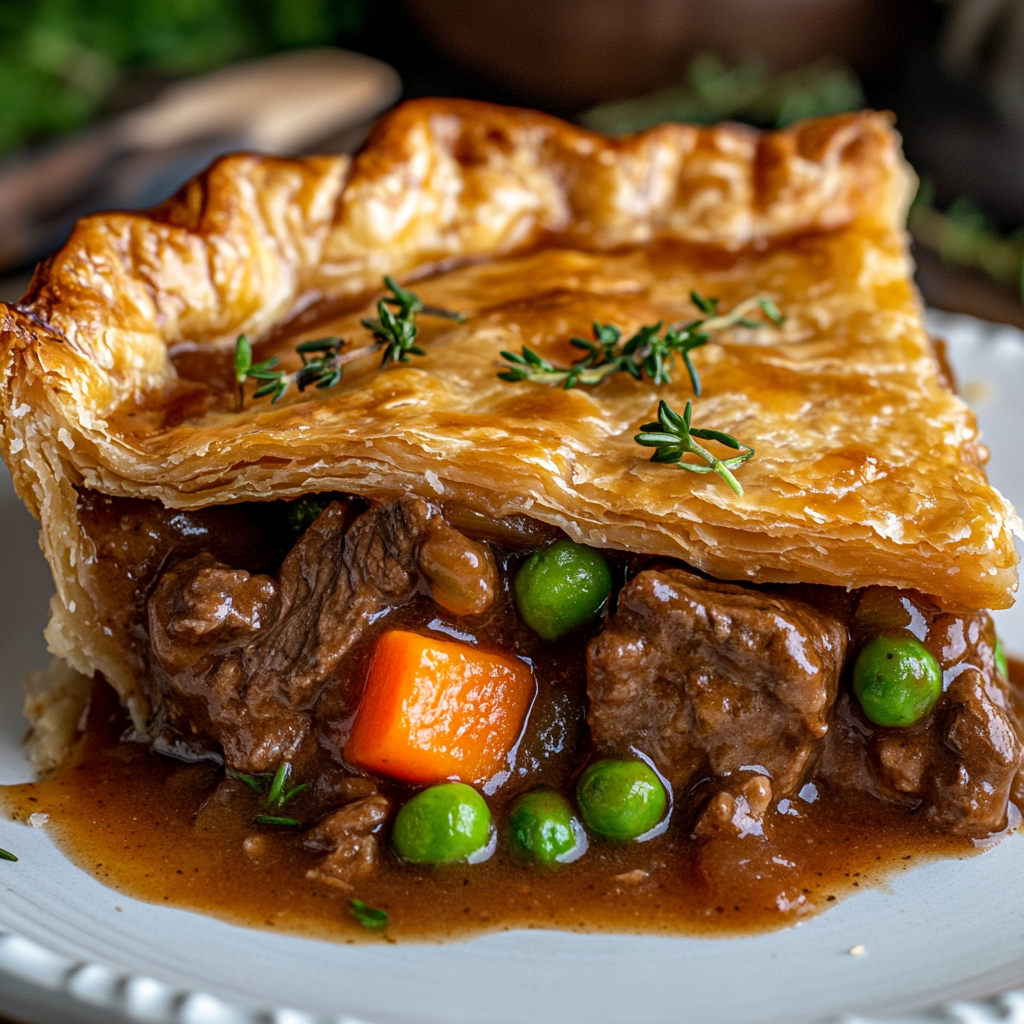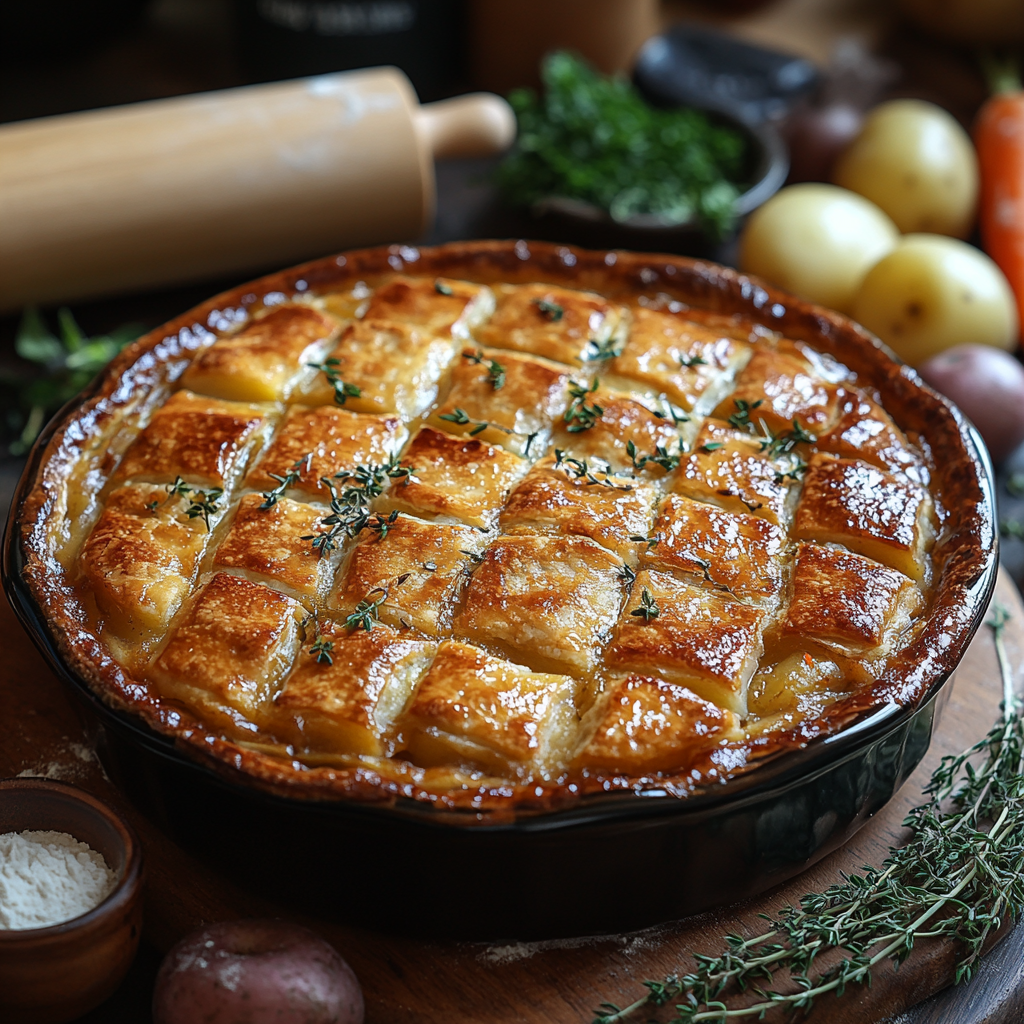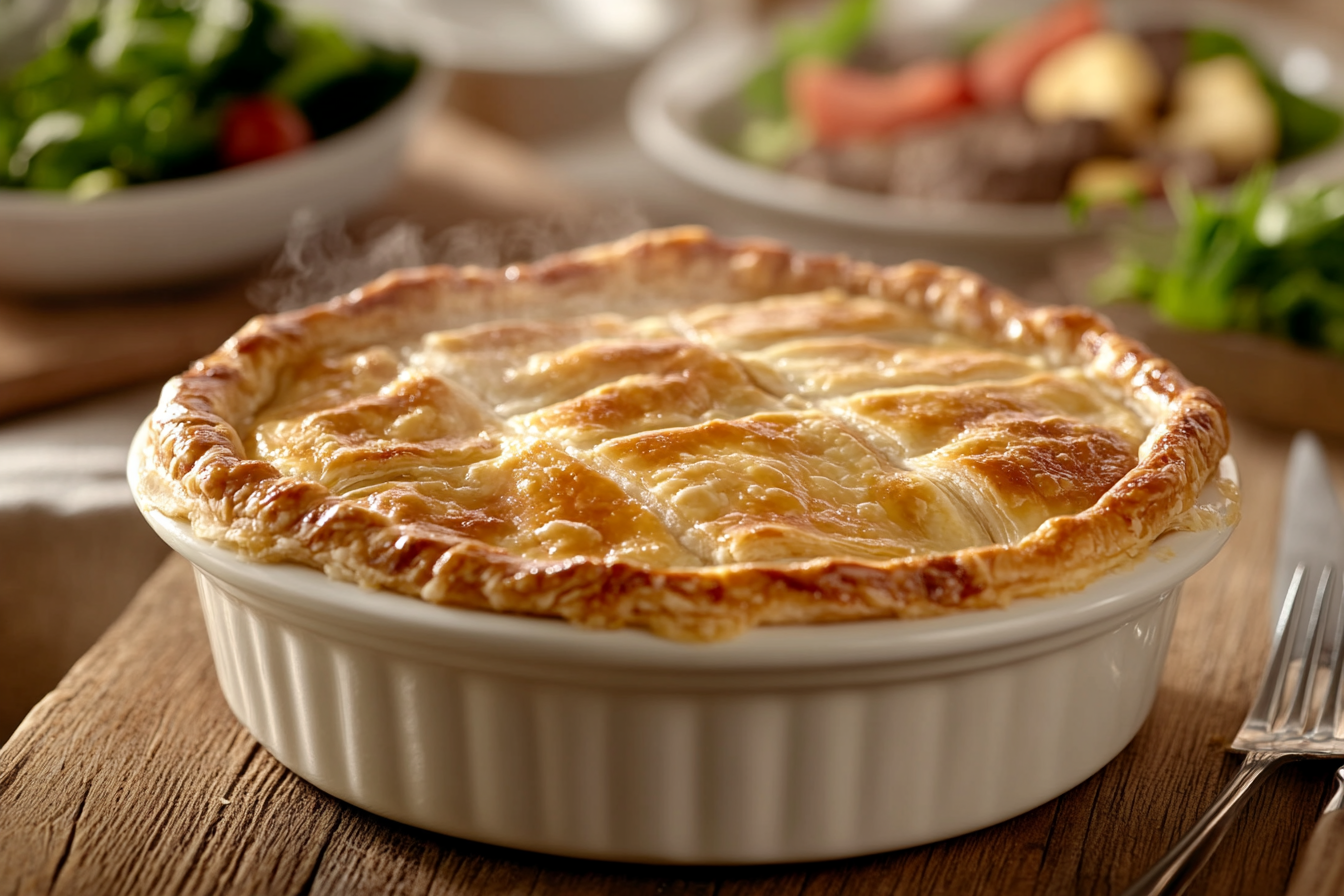Introduction: The Comfort of a Classic Beef Pot Pie
There’s something truly satisfying about a well-made beef pot pie. The combination of tender beef, rich gravy, and a flaky crust creates a comforting dish that’s perfect for any occasion. Whether you’re looking to impress at a dinner party or simply want to indulge in some comfort food, this beef pot pie recipe is your go-to guide.
In this comprehensive guide, you’ll learn not only how to make a beef pot pie but also the history behind the dish, tips for perfecting your recipe, and ideas for customizing it to suit your tastes. By the end of this article, you’ll be equipped with all the knowledge you need to create a beef pot pie that will delight anyone who tries it.
The History of Pot Pies: A Culinary Journey
Rich Culinary Heritage
Pot pies have a long and storied history that dates back to ancient times. The concept of enclosing meat and vegetables in a crust is not new, but it has evolved over centuries to become the beloved dish we know today. In ancient Rome, a precursor to the pot pie was served at lavish feasts, often encasing an entire bird within the crust. This dish was considered a delicacy and was reserved for the wealthy.
From Royal Feasts to Family Dinners
In the Middle Ages, pot pies were a luxurious dish often served at royal banquets. The pies were filled with a variety of meats and sometimes even live birds, which would fly out when the pie was cut open—a spectacle that was meant to entertain guests. Over time, the dish became more accessible and eventually found its way into the homes of everyday people. Today, pot pies are a staple in households across the globe, providing a hearty meal that can be enjoyed by all.
Modern-Day Pot Pies
Today, the pot pie is a symbol of comfort food. It has evolved into a dish that is loved by many for its rich flavors and satisfying texture. While chicken pot pie is perhaps the most common, beef pot pie offers a heartier alternative that’s perfect for those who crave a more robust meal.
Ingredients: What You’ll Need for the Perfect Beef Pot Pie
To create the perfect beef pot pie, you’ll need the following ingredients:
- Beef: Choose a cut that becomes tender when cooked slowly, such as chuck roast or brisket. These cuts have enough fat and connective tissue to become tender and flavorful after slow cooking.
- Vegetables: Traditional choices include carrots, peas, and potatoes, but you can customize your pot pie by adding mushrooms, onions, or even parsnips. The key is to use vegetables that complement the beef without overpowering it.
- Gravy: A rich beef broth thickened with flour or cornstarch makes for a delicious gravy that ties the whole dish together. You can enhance the flavor of the gravy by adding a splash of red wine or Worcestershire sauce.
- Pie Crust: You can use store-bought crust for convenience, or make your own for a more homemade feel. If you’re making your own crust, consider adding herbs like thyme or rosemary to the dough for extra flavor.
- Seasonings: Don’t forget salt, pepper, and herbs like thyme and rosemary. These seasonings add depth of flavor and bring out the best in both the beef and the vegetables.
Step-by-Step Guide to Making Beef Pot Pie

1. Preparing the Beef
Start by browning the beef in a hot skillet. This step is crucial as it locks in the flavor and gives the meat a nice color. Browning the meat also creates a fond—a layer of caramelized bits on the bottom of the pan—that adds depth to the gravy. Once the beef is browned, transfer it to a slow cooker or a pot, and cover it with beef broth. Let it simmer on low heat until the beef is tender, which usually takes about 2-3 hours. If you’re short on time, you can use a pressure cooker to speed up the process.
2. Cooking the Vegetables
While the beef is cooking, prepare the vegetables. Sauté them in a little butter until they’re soft but not fully cooked. This method enhances the flavor of the vegetables and ensures they don’t become mushy in the final dish. If you’re using root vegetables like potatoes or carrots, you might want to parboil them before sautéing to ensure they cook evenly in the pot pie.
3. Making the Gravy
Once the beef is tender, remove it from the pot, and use the remaining liquid to make the gravy. This step involves deglazing the pan with a bit of wine or broth, scraping up any browned bits from the bottom. Thicken the gravy with flour or cornstarch, and add your seasonings. If you prefer a richer gravy, you can add a dollop of cream or a pat of butter at this stage.
4. Assembling the Pot Pie
Roll out your pie crust and line the bottom of a pie dish. Fill the dish with the beef and vegetable mixture, then pour the gravy over the top. Cover with another layer of pie crust, seal the edges, and cut a few slits in the top to allow steam to escape. For a glossy finish, brush the top of the crust with an egg wash made from a beaten egg and a tablespoon of water.
5. Baking the Pot Pie
Bake the pot pie in a preheated oven at 375°F (190°C) until the crust is golden brown and the filling is bubbling, about 45 minutes. If the crust starts to brown too quickly, you can cover it with a piece of aluminum foil to prevent it from burning. For added flavor, sprinkle a bit of coarse salt or grated cheese on top of the crust before baking.
6. Serving Suggestions
Let the pot pie cool slightly before serving. This allows the filling to set, making it easier to cut and serve. Pair it with a simple green salad or roasted vegetables for a complete meal. A glass of red wine, such as a Cabernet Sauvignon, pairs beautifully with the rich flavors of the beef pot pie.
Tips for the Best Beef Pot Pie
Choosing the Right Beef
For the most tender beef, choose a cut that benefits from slow cooking, such as chuck roast or brisket. These cuts are relatively inexpensive and, when cooked properly, can become incredibly tender and flavorful. Avoid lean cuts like sirloin, as they tend to dry out during the long cooking process.

Customizing Your Pie
Feel free to experiment with different vegetables or add a splash of red wine to the gravy for an extra layer of flavor. You can also add herbs like thyme or rosemary to the pie crust for a subtle but fragrant twist. If you’re a fan of cheese, consider adding a layer of shredded cheddar or gruyere on top of the filling before adding the top crust.
Making It Ahead
Beef pot pies can be made ahead of time and frozen. Simply bake from frozen, adding extra time to ensure it’s heated through. To prevent the crust from becoming soggy, assemble the pot pie but don’t bake it. Instead, wrap it tightly in plastic wrap and aluminum foil, and freeze it. When you’re ready to eat, bake the pot pie straight from the freezer, adjusting the cooking time as needed.
Variations on the Classic Beef Pot Pie
Beef and Mushroom Pot Pie
For a twist on the classic beef pot pie, try adding mushrooms to the filling. Mushrooms add an earthy flavor that pairs perfectly with the beef. You can use a variety of mushrooms, such as cremini, shiitake, or portobello, to create a more complex flavor profile.
Spicy Beef Pot Pie
If you like a bit of heat, consider adding some spice to your beef pot pie. You can incorporate ingredients like diced jalapeños, red pepper flakes, or a splash of hot sauce into the gravy. This variation adds a kick that’s sure to please those who enjoy spicy food.
Beef and Guinness Pot Pie
For a rich and hearty variation, try adding Guinness or another stout beer to the gravy. The beer adds depth and complexity to the flavor, making the pot pie even more comforting. This version is perfect for St. Patrick’s Day or any time you’re craving something a little different.
Gluten-Free Beef Pot Pie
For those who are gluten-sensitive, you can easily make a gluten-free version of this dish. Substitute the regular pie crust with a gluten-free crust, and use cornstarch or a gluten-free flour blend to thicken the gravy. The result is a delicious pot pie that everyone can enjoy.

Nutritional Information
Calories: 450 per serving
Protein: 20g
Fat: 22g
Carbohydrates: 30g
Fiber: 4g
Sodium: 700mg
Macronutrient Breakdown
The beef pot pie is a balanced dish that provides a good mix of protein, fat, and carbohydrates. The beef provides high-quality protein, essential for muscle repair and growth. The crust adds carbohydrates, which are the body’s primary source of energy. The vegetables contribute fiber, vitamins, and minerals, making this a well-rounded meal.
Health Considerations
While beef pot pie is undoubtedly delicious, it’s also a rich dish that’s best enjoyed in moderation. If you’re watching your calorie intake, consider serving a smaller portion of the pot pie alongside a large green salad to balance the meal. You can also reduce the amount of fat by using a lower-fat beef cut or substituting some of the butter in the crust with a heart-healthy oil like olive oil.
Internal Linking Opportunities
Based on the sitemap, here are some internal linking opportunities to enrich the article:
- Delicious Avocado Stuffed with Shrimp and Crab Salad Recipe: Use as an example of how to serve a light and refreshing appetizer before the hearty beef pot pie.
- The Ultimate Chuck Roast Beef Recipe: A Step-by-Step Guide to Perfect Tenderness: Link to this article when discussing the best cuts of beef to use in your pot pie.
- Mashed Potatoes Gravy Recipe: Suggest this as a side dish that pairs well with beef pot pie.
- How to Cook the Perfect Chuck Roast: Tips and Recipes: Mention this article when discussing techniques for preparing the beef for your pot pie.
- Smoked Salmon Recipe Guide: Offer this as a suggestion for a light, smoked dish that contrasts nicely with the richness of the pot pie.
Conclusion: The Ultimate Comfort Food
Beef pot pie is more than just a meal; it’s a comforting dish that brings warmth and satisfaction. By following this recipe, you can create a beef pot pie that’s not only delicious but also showcases your culinary skills. Whether you’re cooking for your family or hosting a dinner party, this beef pot pie will surely impress.
Incorporate these tips and variations to make the recipe your own, and don’t forget to explore other comforting recipes on Keller Recipes. With a bit of practice and creativity, you’ll be able to master this dish and many others, ensuring that your kitchen is always filled with the aromas of hearty, homemade food.

